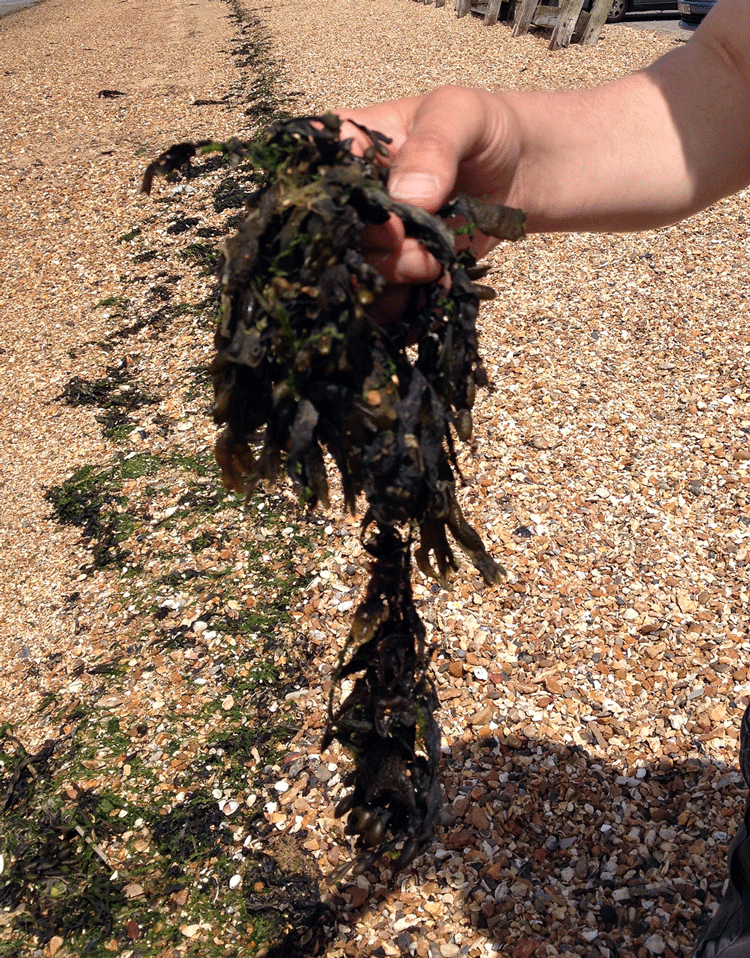It’s all too easy to think of wildlife as something that lives somewhere else. Living in a built up area, we can imagines ourselves as inhabitants of an artificial, purely human environment. Yet nature is all round us all the time, no matter where we are and even in urban areas, there is often a great deal of non-human living matter, especially plant life.
It’s all too easy to take the living world around us for granted, to not even notice it and to consign nature to designated parks, zoos or far off lands. This neglects the riches of the ecosystems lying close at hand, sometimes unheeded for years. Near where I live in England is a beautiful beach called Weston Shore that is often thought of as a simple stretch of pebble-strewn shoreline.
 Through a local community group that I belong too, we’ve been in contact with a professional ecologist called Phil Budd and he’s been kind enough to take us on guided walks along the shore. An amble like this with Phil is a revelation. Even early on in our trip to the beach, his knowledge wakes you up to how the plants and animals in your local area form part of an ecosystem as vibrant and intricate as any tropical jungle or temperate forest.
Through a local community group that I belong too, we’ve been in contact with a professional ecologist called Phil Budd and he’s been kind enough to take us on guided walks along the shore. An amble like this with Phil is a revelation. Even early on in our trip to the beach, his knowledge wakes you up to how the plants and animals in your local area form part of an ecosystem as vibrant and intricate as any tropical jungle or temperate forest.
 On the tide line at the shore is a common type of seaweed called bladderwrack. This is a habitat for the imaginatively named Seaweed fly and these flies in turn are eaten by some of the birds that visit the area. Those birds in turn are eaten by birds of prey like the sparrowhawk. Similarly, a beautiful plant called sea purslane is a habitat for insects such as the lesser marsh grasshopper, which again leads to higher steps in a food chain.
On the tide line at the shore is a common type of seaweed called bladderwrack. This is a habitat for the imaginatively named Seaweed fly and these flies in turn are eaten by some of the birds that visit the area. Those birds in turn are eaten by birds of prey like the sparrowhawk. Similarly, a beautiful plant called sea purslane is a habitat for insects such as the lesser marsh grasshopper, which again leads to higher steps in a food chain.
 I was intrigued to learn that a number of the plants on the shore are perfectly edible (subject to washing, boiling or steaming as appropriate). Sea purslane goes well with fish, for example, or in a salad. Another common plant on the shore is sea beet, the wild ancestor of plants such as beetroot, sugar beet and Swiss chard. It can be eaten cooked or even raw – although none of us were brave enough to try it there and then! Other plants found on the shore can be used in herbal teas or as remedies. These plants have the potential to be something of a treasure trove to foragers.
I was intrigued to learn that a number of the plants on the shore are perfectly edible (subject to washing, boiling or steaming as appropriate). Sea purslane goes well with fish, for example, or in a salad. Another common plant on the shore is sea beet, the wild ancestor of plants such as beetroot, sugar beet and Swiss chard. It can be eaten cooked or even raw – although none of us were brave enough to try it there and then! Other plants found on the shore can be used in herbal teas or as remedies. These plants have the potential to be something of a treasure trove to foragers.
An interesting subplot to Phil’s description of the animals and plants were that a surprising number of them were ones that had been introduced to the area by human activities, such as the Manila Clam. Originating in Asia, this was now quite happily living on our English coasts.
We’ve had some fascinating and fun visits to the shore and we’re looking forward to more. To have such a familiar area opened up in this way is an exciting look into a new world of knowledge. As well as finding out about similar experiences in your area, it is also possible to download apps that can help identify trees and plants and there are plenty of books and online guides on the subject as well. The riches of the natural world are there for everyone to enjoy and to marvel at.
